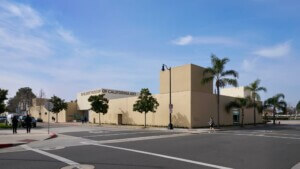From the 1880s to the late 1960s, El Paso’s San Jacinto Plaza was the place to see alligators at alarmingly close proximity. Crowds would sit around the fountain in the middle of the park to watch the sad spectacle of captive reptiles circling their enclosure. When the city asked landscape architecture firm SWA to redo the plaza seven years ago, the firm’s Los Angeles office had the tall task of designing a park that would preserve the turn-of-the-century Arcadian layout beloved by residents and draw crowds, just as the alligators once did.
SWA found harmony between programming and design, despite the trend toward “shoehorning” as much programming as possible into outdoor spaces. “The community wanted a concept that respected the formal axes [of the Arcadian layout], so the axes are still there, but now you come to a destination,” explained Gerdo Aquino, CEO of SWA. SWA collaborated with San Antonio, Texas–based Lake|Flato, which designed a cafe and shade canopy that activate the heart of the roughly two-acre park.
The canopy shelters “Los Lagartos,” Luis Jiménez’s fiberglass alligator statue, an homage to San Jacinto’s one-time residents. SWA encircled the statue with a balustrade and decorative mosaics that radiate out toward a botanical garden, custom chess and ping-pong tables, an outdoor reading room with a lending library, a produce market, and an area for washoes (a game similar to horseshoes but played with washers).
Aquino noted a recent shift in emphasis in park design from beauty and ecology toward beauty, ecology, and programming. According to him, the reason can be distilled to: “One word: Millennials. They ask, ‘Is the landscape a place where I can play? Is it a place where I can meet my friends? Can I FaceTime here?’ It’s all about me. You can’t design a park like you did five years ago.”
Second- and third-tier cities are luring all demographics, not just Millennials, back to the city center with open space projects, Aquino explained. San Jacinto’s landscape plan preserved existing older trees, while pairing native species of oak, agave, and grasses with non-native, but adaptive, plants for pops of color. “If mayors want to make their downtowns more livable,” Aquino said, “they need open space that’s ecological, financially feasible, programmed to the hilt, and also beautiful. You don’t have to live in New York, L.A., San Francisco, or Boston to have access to great design. Great design can be created right where you live.”










